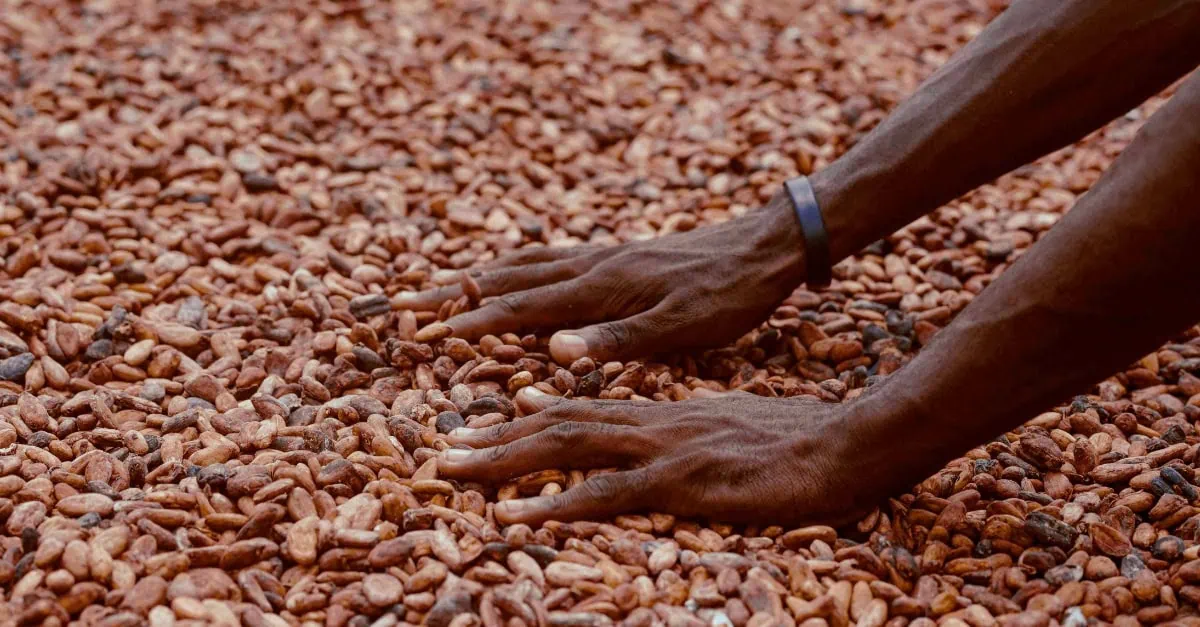July 29, 2025 – Market Analysis
Demand is confirmed weak, yet renewed production worries rise—so do prices again.
The first two weeks of July saw cocoa futures weaken, driven by poor grind numbers and weak demand from chocolate confectionary companies. But last week futures prices recovered what they lost in the two preceding weeks due to renewed weather and pod survival concerns from West Africa.
The cocoa market is usually more receptive to production problems than to demand worries, unless there is an extreme contraction of demand. While demand has indeed contracted significantly, worries about supply arise quickly once weather conditions aren’t ideal, especially when there is no room for error with a historically tight stocks-to-usage ratio.
Supply concerns drive market sentiment despite weak fundamentals
West African cocoa production faces another challenging season ahead, with industry sources forecasting a 10% decline in output for the 2025/26 season across the region’s four major producing countries.
Production forecasts deteriorate rapidly
Initial optimism from improved weather conditions in May and June has given way to more pessimistic assessments. Pod counters employed by exporters and trading houses report that flower and cherelle mortality rates in Ivory Coast are running 15-20% above their May forecasts, with elevated rates expected to continue through July.
This represents a significant reversal from earlier projections. The current 10% decline forecast contrasts sharply with the 5% increase predicted just two months ago, demonstrating how quickly production expectations can shift in response to field conditions.
Ivory Coast struggles with structural challenges
The country’s production trajectory illustrates the broader challenges facing West African cocoa farming. From producing over 2 million metric tons five years ago, Ivory Coast’s output is on track to reach just 1.6 million metric tons this season.
Cocoa arrivals at Ivory Coast ports have reached 1.62 million metric tons by July 27th, down 2% from the same period last season. More concerning for processors, the quality of mid-crop beans has deteriorated significantly, with average free fatty acid content spiking to 12% compared to the typical 1.75%, while bean count per 100 grams increased from 106-110 to 150.
Ghana’s production collapse continues
Ghana’s cocoa sector faces even more severe challenges, with production plummeting from over 1 million metric tons to less than half that amount last season. While the country’s regulator forecasts a rebound to 600,000 metric tons this season, the International Cocoa Organization places estimates closer to 500,000 metric tons.
Pod counters express skepticism about Ghana’s ability to recover production levels above 500,000 metric tons in the near term, citing persistent structural problems including aging tree stocks, disease pressure, and destructive small-scale gold mining activities.
Demand destruction reaches unprecedented levels
Despite supply-side concerns, the chocolate industry is experiencing its most significant demand contraction in over a decade, driven by record-high cocoa prices that have fundamentally altered consumer behavior and manufacturing strategies.
European processing hits five-year low
Europe’s second-quarter cocoa grind fell 7.2% year-over-year to 331,762 metric tons, marking the lowest level since the COVID-19 pandemic in 2020. The decline exceeded market expectations of 3-5% and represents the fourth consecutive quarter of year-over-year decreases.
This performance reflects the broader challenges facing chocolate manufacturers as they struggle to pass increased raw material costs to consumers while maintaining market share.
Asian markets show steeper declines
Asian cocoa processing has contracted even more dramatically, with second-quarter grindings falling 16.3% to 176,644 metric tons—the smallest amount for the period since 2017. Malaysia specifically saw grindings drop 22% in the second quarter, with first-half totals down 18.5% year-over-year.
These steep declines indicate that Asian chocolate manufacturers are finding it particularly difficult to absorb higher cocoa costs or pass them through to price-sensitive consumer markets.
Local processors cut operations
The impact extends to origin countries as well. Cocoa grinders in Ivory Coast have voluntarily reduced their bean purchases by 20% since January due to shrinking margins from price volatility. Processors report operating with minimal inventories and buying only what they need for immediate use, abandoning the larger stockpiles typical of previous seasons.
Lower-quality mid-crop beans with reduced fat and butter content have prevented factories from running at full capacity, further constraining processing volumes during a period when global supply is already tight.
Implications for procurement managers
The current cocoa market presents unique challenges for food manufacturers managing ingredient costs and supply chain risk. The fundamental tension between weak demand and persistent supply concerns creates an environment where traditional procurement strategies may need adjustment.
Price volatility likely to continue
With production forecasts subject to rapid revision based on weather conditions and demand remaining structurally weak, cocoa prices are likely to experience continued volatility. Procurement teams should prepare for sudden price movements in either direction as market sentiment shifts between supply fears and demand concerns.
Supply chain diversification becomes critical
The concentration of production challenges in West Africa highlights the importance of supplier diversification where possible. While Ivory Coast and Ghana dominate global supply, exploring relationships with processors who source from multiple origins could provide some risk mitigation.
Quality specifications may require flexibility
The deterioration in bean quality from key origins, particularly the increased acidity and reduced butter content in mid-crop supplies, suggests that rigid quality specifications may become increasingly costly or difficult to meet. Procurement managers should evaluate whether some flexibility in quality parameters could provide cost or availability advantages.
Forward contracting strategies need reassessment
The disconnect between futures prices and physical market fundamentals requires careful evaluation of hedging and forward purchasing strategies. While futures markets respond quickly to production concerns, the underlying demand weakness suggests physical premiums and discounts may evolve differently than futures price movements.
Read the complete market analysis, including detailed company updates, regulatory changes, and price forecasting tools here: https://app.vespertool.com/market-analysis/2136
